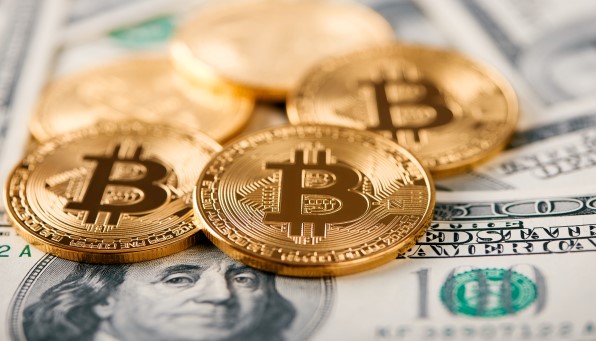It is a digital currency whose worth is pegged to another asset class, such as fiat currency or gold. The value of a stablecoin is mostly pegged to the US dollar, as its value is typically specific. So, it acts as a bridge between fiat currencies and crypto coins. Stablecoins are designed to reduce fluctuations in unstable cryptocurrencies. Stablecoins try to alleviate the price volatility problem faced by most cryptocurrencies, allowing the benefits of digital currencies to be enjoyed. There are three types of stablecoins: Fiat-Collateralized Stablecoins, Crypto-Collateralized Stablecoins, and Algorithmic Stablecoins.
These are some of the advantages that make stablecoins attractive in the market;
- Minimize fluctuation,
- Can exchange or accumulate assets,
- Can earn interest
- Can make cheap money transfers ,
- Can make an international money transfer.
On the other side stablecoin has several risks such as;
- Like other cryptocurrencies, stablecoins are held somewhere, which poses a risk that the trading platforms are not secure enough or that security is disclosed.
- Many parties, such as the banks that hold the reserves and the issuer of the stablecoin, are dealt with and need to protect the currency's value. For this reason, some counterparty risks may arise.
- Reserves, the most crucial element of the stablecoin ecosystem, pose a risk. Without reserves, the coin-issuing institution cannot guarantee the value of the fixed currency.
- A stablecoin not adequately backed by cash fixed assets may lose the set against the target unit.
As of May 2022, the most popular stablecoins based on market capitalization are: Tether (USDT), USD Coin (USDC), Binance USD (BUSD), Binance USD (BUSD), Dai (DAI), TrueUSD (TUSD)
Stablecoin Regulations in the US
In addition to Bitcoin and Ethereum, the most popular crypto investments, stablecoins also have an important place in the crypto ecosystem with the value of $ 190 billion. As the stablecoin market has expanded and failure rates have increased, legislators and experts have begun to feel the need to legislate stablecoins. US Treasury Secretary Jannet Yellen expressed their concerns in April 2022 by touching on the growing uncertainty that stablecoin issuers will be able to back up their stablecoins with traditional assets in times of stress. US President Joe Biden signed an executive order in March 2022 directing government agencies to design a framework that regulates digital currencies to protect investor interests and curb threats.
Wyoming is the most crypto-friendly state in the United States, and several states made a significant push for digital asset regulations in 2018. Wyoming has laid the legal basis for smart contracts, explained how digital assets will be handled in commercial law and made it easier for entrepreneurs to set up limited-liability companies to help investors. In addition, it passed a law that gives legal status to decentralized autonomous entities (DOAs) and allows Wyoming banks to store digital assets without hindering their institutional investors from holding direct ownership.
Before Wyoming, in 2015, the New York Department of Financial Services (NYDFS) issued its digital currency regulation under the New York Financial Services Act. With this regulation, the state allowed organizations to apply for a BitLicense or a charter under the New York Banking Act to conduct the business activity with digital currency within geographical boundaries. The NYDFS has issued many digital currency licenses and statutes to ensure access to well-regulated digital currency markets. Therefore, New York has become an important center of technological innovation in the field of blockchain and crypto.
Other states such as Colorado, Texas, California, and Ohio have also taken a crypto-friendly approach, introducing crypto mining, consumer protection, crypto businesses, and other multifaceted regulations.
Josh Gottheimer, a member of the US House Financial Services Committee, introduced the draft stablecoin Innovation and Protection Act in February 2022. The bill defined qualified fixed currencies as those issued by insured deposit institutions and certain non-banking institutions. It was proposed to protect the interests of token holders with the stable-money insurance fund and to allow them to exchange these qualifying stablecoins for US dollars if necessary. However, the bill, which aims to separate accredited stablecoins from the broader market, did not specify how stablecoins could enter the regulatory framework.
The Responsible Financial Innovation Act (RFIA) has been announced. The law aims to bring all crypto products under the regulation of the Commodity Futures Trading Commission. The law addresses many issues related to how investor interests can be protected. Thanks to the law, which introduces the term 'utility asset', we see that stablecoins fully fit this definition. If the bill is approved, stablecoins will be treated similarly to other commodities.

The UK Focuses on Stablecoins
The UK’s Financial Conduct Authority (FCA) highlighted the rapid development of cryptocurrencies and virtual assets. It identified the sector among high-risk fields and adopted stricter rules in January 2022. After that, it published a crypto asset guide also with the effects of the Russian-Ukraine War, collaborating with governmental entities of the country.
For a while, the countries’ perfective has been on the consideration that these assets have a high risk for businesses, and they must be careful to protect their companies. However, the intention regarding crypto assets and stablecoins are evolved recently, and the UK aims to be a center for this kind of financial means.
Today, the UK widens its range of digital currencies and puts effort into becoming the leading actor in the market for payment companies. During the last five years, it adopted its legislative system to the trending technological developments, especially in Virtual Assets (VAs) . Now, it is the most attractive jurisdiction for Virtual Asset Providers (VAPs). This year, the government recognized stablecoins as a novel payment means. It was a call for digital payment firms to provide their services in the UK territories and increase investments. However, the question coming to mind is whether other markets are ready to respond to these kinds of developments legislatively or economically.
Although the UK determines no certain stablecoin list, it is one of the most recent payment methods in the country. The mediators and investors expect to see certain kinds like Dai stablecoin or USDC stablecoin in the list, but the government target to set specific regulatory approaches at first.
MAS Decided to Consult Public
Stablecoins are a global economic focus for many jurisdictions. In addition to the USA, the UK, and other European countries, Asian leaders take them into their agenda this year. The Monetary Authority of Singapore (MAS) considered its standing position after the collapse of algorithmic stablecoin TerraUST. The authorities compromised on the fact that there is a lack of information regarding cryptocurrencies, especially stablecoins, among the market actors. Thus, MAS found the solution to consult the public about stablecoins to improve related regulation of the state. It highlights the significance of increasing awareness about the risks of stablecoins and regulatory processes.
On the other hand, MAS is working together with global authorities to advance local anti-money legislation. The focus of the collaboration is the cryptocurrency market and international developments.
The article reviews three of the major economies working on crypto assets and stablecoins nowadays. However, there has been a global tendency toward digital assets during the last decade. Financial Action Task Force (FATF) remarked on virtual assets and risks of the cryptocurrency sector in its updated Travel Rule in March 2022. G7 leaders examined the Travel Rule and decided to go into the move to protect global financial stability from the other side. They agreed on the threats and potential hazards coming from crypto assets. The collapse of LUNA and UST stablecoins accelerated regulatory processes from all over the world.
An international crypto regulation proposal is expected to be published by the Financial Stability Board (FSB) in October. These are just some parts of the issue, not the whole picture. However, they give the insight that the crypto sector will enhance its significance and domination worldwide despite its uncertainties and risks in the coming years.





